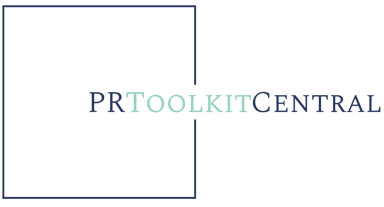Plotting the Course: Mastering Thought Leadership for Your Clients in Today's Business Landscape
"Thought leadership." It's a term we've all seen in a client brief or two. It's an objective, a strategy, a desired outcome, yet so many PR professionals find it a challenging journey. If you've found yourself wrestling with the question of how to transform your clients into respected thought leaders in their respective fields, know that you're not alone.
Thought leadership isn't about being the most knowledgeable in an industry. Rather, it's about sharing insightful analyses, offering solutions, and educating the audience, essentially becoming their go-to source within a particular niche. Today, let's delve into this complex yet essential concept, its transformative role in marketing strategies, and how you, as a PR professional, can leverage it to elevate your clients and help them make a significant impact in their industries.
Understanding the Evolution of Thought Leadership
The term "thought leadership" isn't new, but our understanding of it has substantially evolved over the years. It's no longer a mere platform for industry experts to share their insights; instead, it's morphed into a powerful strategic tool, a golden ticket to brand credibility, influence, and authentic engagement. This shift in thought leadership mirrors the changing consumer behaviors and expectations, placing a greater emphasis on delivering value-driven, consistent content that is not merely heard but resonates with the audience.
Charting the Path: Strategies and Techniques for Thought Leadership
Ready to embark on the thought leadership journey for your clients? Here are some strategies that could pave the way:
Blogging about industry trends: Penning a well-crafted blog post that addresses the latest industry trends is one of the most effective ways to show your client's deep understanding of their field. But it's not just about acknowledging the trends. To truly be a thought leader, your client must present these trends in the context of their audience's concerns, analyzing their implications and predicting future directions. This approach not only keeps audiences informed, but also engaged and invested in your client's perspective.
Addressing the audience's pain points: Thought leadership is as much about empathy as it is about expertise. By stepping into the audience's shoes, understanding their challenges, and crafting tailored solutions, you can highlight your client's capacity for empathy and understanding. This builds trust and positions your client as a problem-solver, not just an industry expert. Encourage your clients to listen to their audience, engage in two-way conversations, and use these insights to inform their thought leadership content.
Creating video content: In an era where attention spans are at an all-time low, videos provide a dynamic, visual, and engaging format to share expertise. They can bring complex concepts to life, facilitate learning, and engage audiences on an emotional level. Whether it's webinars, interviews, tutorials, or thought-provoking presentations, strategic video content can help your clients break through the noise and establish a stronger connection with their audience.
Harnessing the power of Subject Matter Experts (SMEs): Your client's in-house experts are treasure troves of insights waiting to be unlocked. Leveraging their knowledge can add a layer of depth and authenticity to your content that's hard to replicate. SMEs can contribute to blogs, webinars, podcasts, white papers, and social media discussions, providing valuable input based on their unique experiences and perspectives. This collaboration not only enriches your content but also reinforces the team's commitment to thought leadership.
Social media: Social media platforms like Twitter, LinkedIn, and Instagram are crucial channels for thought leadership. They allow your client to reach a broader audience, engage in real-time discussions, gather audience insights, and build a community around their brand. It's not just about sharing content; it's about sparking conversations, listening, and interacting authentically. By doing so, your client can demonstrate that they're not only a leader in their field, but also a brand that values its audience's insights and experiences.
Consistent content production: Consistency is key in any thought leadership strategy. By regularly delivering high-quality content, your client communicates their commitment to serving their audience with relevant and timely insights. This consistency strengthens their reputation as a reliable source and reinforces their brand positioning in the industry. Consistency isn't just about frequency; it's also about maintaining a consistent message, tone, and quality across all pieces of content.
Thought Leadership: The Unsung Hero in Business Operations
When wielded correctly, thought leadership can significantly impact various areas of business:
Content Creation: Thought leadership breathes life into your content, transforming it into a veritable library of insights. It ensures your content isn't just informative, but insightful, thought-provoking, and worth the reader's time.
Lead Generation: By positioning your client's brand as a trusted information source, thought leadership content can attract prospective clients. It helps build brand credibility, establishes your client as an industry expert, and provides valuable insights that potential customers can't ignore.
Nurture Campaigns: Thought leadership content can help nurture existing leads by keeping your client's brand top of mind. It provides existing prospects with useful insights and solutions, creating an ongoing relationship between the prospect and your client's brand.
Becoming a Thought Leader: The Long Game
Thought leadership isn't a sprint; it's a marathon. The path towards becoming a thought leader is gradual and strategic. Future trends lean towards data-backed insights, multichannel distribution, and interactive content. Advancements in AI and machine learning indicate that the landscape of thought leadership is set to become more exciting and challenging.
Now that you've understood what thought leadership is and its importance for PR and marketing, it's time to apply it for your clients. From increasing brand awareness, generating leads, driving sales, and enhancing customer loyalty, to building fruitful relationships with journalists and influencers - thought leadership serves as a multifaceted tool in the PR and marketing toolbox.
As we've discussed, becoming a thought leader involves identifying your target audience, developing a clear thought leadership message, creating and distributing relevant content, and measuring the success of your efforts. Remember, the journey to thought leadership is a long game - persistence, consistency, and patience are your best allies.
Thought leadership can indeed serve as a powerful asset in achieving diverse PR and marketing goals. With the tips outlined in this guide, you are better equipped to help your clients become thought leaders in their fields.
Keen on deepening your understanding of thought leadership? Check out our free Thought Leadership Program Management template!




